Introduction
In today’s competitive market, custom stickers play a pivotal role in branding, marketing, and customer engagement. With Dubai’s bustling business scene, companies like GFX Printer are at the forefront of delivering high-quality sticker printing solutions. Understanding the Mistakes to Avoid in Sticker Production is crucial for businesses aiming to leverage these powerful marketing tools effectively.
Chapter 1: The Basics of Sticker Production
1.1 Understanding Sticker Production
Sticker production, an art and science combined, crafts not just an adhesive piece but a powerful branding and communication tool. In the heart of Dubai, UAE, amidst its vibrant market, various sticker types like vinyl stickers, bumper stickers, and decal stickers thrive, serving diverse purposes. From logo stickers enhancing brand identity to custom labels on products, stickers are versatile. They range from name labels for personal use to window stickers and floor stickers for commercial spaces, each with its unique application and audience.
Types of Stickers and Their Uses
- Vinyl Stickers: Known for their durability and weather resistance, ideal for outdoor use, including car stickers and bumper stickers.
- Decal Stickers: Often used for detailed artwork and intricate designs, perfect for laptop stickers and window decals.
- Custom Labels: Tailored for product branding, these include product labels, name labels, and shipping labels, crucial for logistics and brand visibility.
1.2 The Sticker Production Process
The sticker production journey is meticulous, starting from a creative idea to the final product in hand. Selecting a reputable sticker maker or label printer in Dubai’s competitive market is crucial for quality assurance. GFX Printer stands out as a reliable partner in this journey, ensuring top-notch sticker quality.
Design and Conceptualization
The initial phase involves brainstorming and designing, where ideas transform into visual representations. Attention to detail in design, alignment, and color selection sets the foundation for an impactful sticker.
Material Selection
Choosing the right material is pivotal. Options range from glossy and matte vinyl to transparent and waterproof materials, each serving different purposes. For instance, waterproof stickers are essential for products exposed to moisture, while transparent stickers offer a sleek look for branding without obstructing views.
Printing Techniques
With advancements in printing technology, sticker production now offers incredible precision and color accuracy. Digital printing, for instance, allows for vibrant and detailed prints, suitable for photo stickers and safety stickers. Screen printing, on the other hand, is ideal for bulk orders, ensuring color vibrancy and durability, perfect for automotive stickers and outdoor labels.
Cutting and Finishing
The final steps involve cutting, which can range from simple shapes to intricate die-cut stickers, tailored to the design’s specifics. The finishing touches, including lamination or UV coating, add durability and longevity, essential for floor stickers and outdoor use.
Key Considerations in Sticker Production
- Design Precision: Ensuring the design aligns with the brand’s identity and message is crucial.
- Material Durability: Selecting materials that withstand environmental conditions, especially for outdoor applications.
- Printing Quality: High-resolution printing is non-negotiable for clear and vibrant stickers.
- Cutting Accuracy: Precise cuts enhance the sticker’s aesthetic and functional appeal.
In the bustling market of Dubai, UAE, where branding and visual communication are key, stickers offer a versatile and effective solution. Whether it’s for label stickers in retail or custom stickers for personal use, understanding the basics of sticker production can significantly impact the final outcome. With GFX Printer, businesses and individuals alike can navigate these complexities, ensuring their stickers not just stick, but also stand out.
Chapter 2: Common Mistakes in Sticker Design
Designing stickers might seem straightforward, but several common pitfalls can compromise their effectiveness and appeal. Awareness and attention to these details can significantly enhance the final product’s impact.
2.1 Poor Design Alignment
Alignment and balance are fundamental in sticker design, ensuring the message is communicated clearly and aesthetically. A misaligned sticker can convey a lack of professionalism and attention to detail, detracting from the intended message.
Symmetry and Balance
- Symmetry in design contributes to a harmonious appearance, making stickers more appealing.
- Balance, whether symmetrical or asymmetrical, ensures that no single element overpowers others, maintaining design cohesion.
Avoiding Clutter
- A cluttered design can overwhelm the viewer, making it difficult to discern the sticker’s message.
- Simplicity and clarity should be the goals, with a focus on the essential elements that convey the message effectively.
2.2 Inappropriate Material Selection
The choice of material is crucial in determining a sticker’s functionality and longevity. Different applications require different materials, and selecting the wrong one can lead to premature wear, damage, or ineffectiveness.
Understanding Material Properties
- Vinyl stickers are durable and weather-resistant, ideal for outdoor applications like car stickers and bumper stickers.
- Transparent stickers offer a sleek look, perfect for window displays or packaging, where you want the background to show through.
- Waterproof stickers are essential for products exposed to moisture, ensuring the label remains intact and legible.
Matching Material to Application
- The environment where the sticker will be used should guide the material selection process.
- For instance, waterproof and UV-resistant materials are vital for stickers exposed to outdoor conditions.
2.3 Ignoring Print Quality
The clarity and vibrancy of a sticker’s print are pivotal for its visual impact. High-resolution printing ensures that details are crisp, and colors are vivid, making the sticker stand out.
Importance of High-Resolution Printing
- High-resolution images prevent pixelation and blurriness, ensuring the sticker’s design is clearly visible.
- Modern printing techniques, such as digital printing, offer superior color accuracy and detail definition.
Choosing a Reliable Printing Service
- A reputable sticker printing service in Dubai, like GFX Printer, can guarantee high-quality prints that reflect well on your brand or message.
- Investing in quality printing can differentiate your stickers from competitors, making them more effective as marketing or branding tools.
2.4 Overlooking Color Accuracy
Color is a powerful communication tool, capable of evoking emotions and reinforcing brand identity. Accuracy and consistency in color reproduction are essential for maintaining brand integrity and visual appeal.
Consistency Across Batches
- Ensuring color consistency across different production runs is crucial for brand recognition and trust.
- Slight variations in color can lead to a disjointed appearance, affecting the brand’s perception.
Using the Correct Color Models
- Understanding the difference between RGB (used for digital displays) and CMYK (used for printing) is vital for achieving accurate color reproduction.
- Pre-press proofs and color matching systems can help ensure that the colors on the final sticker match the original design intentions.
In sticker design, the devil is in the details. From ensuring the design is aligned and balanced to selecting the appropriate material and ensuring print and color quality, each aspect plays a crucial role in the sticker’s effectiveness. By avoiding these common mistakes, designers and brands can create stickers that not only stick but also stand out for all the right reasons.
Chapter 3: Technical Pitfalls in Sticker Production
Navigating the technical aspects of sticker production is crucial for achieving the desired quality and functionality. This chapter delves into common technical pitfalls and offers insights into avoiding them.
3.1 Cutting and Die Errors
Precision in cutting is non-negotiable, especially for die-cut stickers and custom shapes that demand intricate detailing. Errors in this stage can lead to a final product that deviates from the intended design, impacting the overall aesthetic and functionality.
Ensuring Cutting Precision
- Advanced cutting technology, like laser cutting, offers unmatched precision for complex shapes and designs.
- Regular maintenance and calibration of cutting equipment are essential to avoid inaccuracies and ensure consistent quality.
Design Considerations for Cutting
- Designers should be mindful of the limitations and capabilities of cutting technology when creating sticker designs.
- Allowing for a bleed area and clear margins can prevent important design elements from being trimmed off.
3.2 Adhesive Failures
The choice of adhesive plays a pivotal role in a sticker’s effectiveness. The wrong adhesive can lead to stickers peeling off prematurely or damaging surfaces upon removal.
Selecting the Right Adhesive
- Different surfaces require different adhesives; for example, automotive stickers need adhesives that can withstand high temperatures and outdoor conditions.
- Test adhesives on intended surfaces before full-scale production to ensure compatibility and performance.
Adhesive Quality and Longevity
- High-quality adhesives ensure stickers remain in place without leaving residues upon removal.
- Environmental considerations, like exposure to sunlight and moisture, should inform adhesive selection to ensure longevity.
3.3 Durability Concerns
Stickers, especially those used outdoors, like car stickers and window stickers, face environmental challenges that can affect their lifespan.
Material and Print Durability
- Using UV-resistant inks and laminates can protect stickers from fading and wear caused by sun exposure.
- Waterproof materials and inks are essential for stickers exposed to moisture, ensuring they remain legible and intact.
Environmental Resistance
- Consideration of the sticker’s exposure to elements can guide the choice of materials and printing methods.
- Vinyl stickers are renowned for their durability, making them an excellent choice for outdoor applications.
Testing for Durability
- Conducting accelerated aging tests can provide insight into how stickers will hold up under various environmental conditions.
- Such tests help in selecting the best materials and inks for the intended use case, ensuring the stickers’ longevity.
By addressing these technical pitfalls head-on, sticker producers can ensure their products meet the highest standards of precision, adhesion, and durability. Whether it’s for branding, decoration, or functional labeling, the right approach to sticker production can make all the difference in achieving long-lasting, high-quality results.
Chapter 4: Operational Challenges in Sticker Printing
Overcoming operational challenges is key to maintaining efficiency and quality in sticker production. This chapter explores common hurdles and strategies to navigate them effectively.
4.1 Inefficient Production Workflow
An efficient workflow is the backbone of productive sticker printing operations. Streamlining the process from design to delivery is crucial for minimizing waste and maximizing output.
Streamlining Design to Print Processes
- Integrating digital design tools with printing machinery can reduce transfer errors and speed up production.
- Automation of repetitive tasks, such as weeding and cutting, can significantly improve production times.
Optimizing Production Scheduling
- Effective scheduling ensures that machinery and labor are utilized efficiently, reducing downtime and bottlenecks.
- Prioritizing jobs based on complexity, urgency, and resource availability can enhance workflow efficiency.
4.2 Neglecting Environmental Factors
The printing environment plays a significant role in the quality of the final sticker. Factors like humidity, temperature, and dust can adversely affect print quality and adhesive performance.
Maintaining Optimal Printing Conditions
- Controlling humidity and temperature can prevent material warping and ink spreading, ensuring crisp prints.
- Regular cleaning and maintenance of the production area and equipment can minimize dust and debris that may affect print quality.
Adapting to Environmental Challenges
- In regions with extreme conditions, like Dubai, special considerations such as air conditioning and dehumidifiers in the printing area can maintain a consistent production quality.
4.3 Quality Control Oversights
Quality control is crucial at every stage of sticker production to ensure the final product meets the desired standards. Lapses in quality control can lead to reprints and wastage, impacting cost and customer satisfaction.
Implementing Rigorous Quality Checks
- Setting up checkpoints at critical stages, such as post-printing and before packaging, can catch errors early.
- Employing quality control personnel dedicated to monitoring production can ensure standards are consistently met.
Leveraging Technology for Quality Assurance
- Advanced scanning and imaging technologies can detect defects that might be missed by the human eye, allowing for immediate corrections.
- Digital proofs and pre-print samples can provide a final check before full-scale production begins, reducing the risk of large-scale errors.
Operational efficiency in sticker printing is not just about speed but also about maintaining high quality while minimizing waste. By addressing these operational challenges with smart planning, technology, and stringent quality control measures, sticker printing businesses can achieve a balance between productivity and excellence. Whether for custom stickers in Dubai or label printing globally, overcoming these hurdles is essential for success in the competitive printing industry.
Chapter 5: Advanced Considerations in Sticker Production
As the sticker production industry evolves, staying abreast of new trends, technologies, and sustainability practices is essential for businesses aiming to lead in the market.
5.1 Innovations in Sticker Printing Technology
Technological advancements have revolutionized sticker production, making it possible to achieve higher quality prints and more intricate designs than ever before.
Digital Printing Innovations
- The latest digital printers offer incredible resolution, allowing for the production of photo stickers with lifelike clarity.
- Digital printing technology enables faster turnaround times, making it ideal for urgent orders and short runs.
Eco-Friendly Printing Solutions
- UV-curable inks not only provide durability and resistance to fading but are also more environmentally friendly, emitting less volatile organic compounds (VOCs).
- Water-based inks, used in some new printing technologies, offer an eco-friendly alternative without compromising print quality.
5.2 Customization and Personalization Trends
The demand for personalized and customized stickers is growing, driven by consumer desire for unique and personal products.
Leveraging Technology for Customization
- Online customization tools allow customers to design their name stickers, logo stickers, or label stickers directly on the printer’s website, offering a user-friendly experience.
- Variable data printing technology enables the production of stickers with different designs or personalized information in a single print run, efficiently catering to the custom sticker market.
Meeting Consumer Demands for Personalization
- Offering a wide range of customization options, from die-cut stickers to bumper stickers in various shapes and sizes, can meet diverse market needs.
- Personalized stickers, such as name labels for school supplies or custom labels for small businesses, add a personal touch that consumers value.
5.3 Sustainability in Sticker Production
Sustainability is becoming a significant consideration in sticker production, with consumers and businesses alike seeking eco-friendly options.
Sustainable Materials
- Biodegradable and compostable materials are being developed for sticker production, reducing the environmental impact.
- Recycled materials are also being used more frequently, offering a reduced carbon footprint without compromising sticker quality.
Waste Reduction Techniques
- Efficient production workflows and digital printing technologies can significantly reduce material waste.
- Adopting a ‘print-on-demand’ model minimizes overproduction and inventory waste, aligning with sustainable business practices.
Eco-Friendly Practices
- Solar-powered printing facilities and energy-efficient equipment can lower the carbon footprint of sticker production.
- Water-based adhesives and inks, along with solvent recycling systems, contribute to a cleaner, more sustainable production process.
By embracing technological innovations, catering to the demand for customization, and committing to sustainability, sticker production companies can not only enhance their product offerings but also contribute to a more environmentally responsible industry. These advanced considerations are not just trends but are shaping the future of sticker production, offering opportunities for businesses to innovate and grow.
Chapter 6: Solutions and Best Practices
In sticker production, achieving excellence requires a blend of creativity, precision, and efficiency. This chapter outlines essential best practices and solutions to optimize every aspect of sticker production.
6.1 Design Best Practices
A well-designed sticker not only captures attention but also communicates its message effectively. Adhering to design principles can significantly enhance a sticker’s impact.
Clarity and Simplicity
- A clear and simple design ensures that the sticker’s message is immediately understandable. Avoid overcrowding the space with too many elements.
Consistent Branding
- For business-related stickers, maintaining brand consistency in colors, fonts, and logos is crucial. This reinforces brand recognition and trust.
Effective Use of Color and Typography
- Color should be used strategically to attract attention and evoke the desired emotional response. The color scheme should be accessible and visually appealing.
- Typography must be legible and appropriate for the sticker’s size and purpose. Choosing the right font size and style can significantly impact readability.
6.2 Material and Print Quality Optimization
The choice of materials and printing methods plays a significant role in the durability and appeal of the final product.
Selecting the Right Material
- The selection should be based on the sticker’s intended use and environment. For outdoor stickers, materials that are weather and UV resistant, like high-grade vinyl, are preferred.
- The thickness and finish of the material can also affect the sticker’s look and feel. Glossy finishes are great for vibrant colors, while matte finishes offer a more subtle and professional look.
Ensuring High-Quality Printing
- High-resolution printing is essential for sharp and clear images. A minimum of 300 DPI (dots per inch) is recommended for most sticker designs.
- Testing print quality with a sample run can prevent large-scale errors, saving time and resources.
6.3 Streamlining Production Processes
Efficient production processes are key to reducing costs, minimizing waste, and ensuring timely delivery.
Adopting Lean Manufacturing Principles
- Lean manufacturing techniques, such as the 5S system (Sort, Set in order, Shine, Standardize, Sustain), can enhance organization and efficiency in the production environment.
- Continuous improvement practices, like Kaizen, encourage ongoing optimization of processes, leading to better quality and efficiency over time.
Automation and Technology Integration
- Automating repetitive tasks, such as cutting and weeding, can significantly speed up production while reducing human error.
- Integrating design software with printing and cutting machinery can streamline the workflow, from concept to final product.
Quality Control and Feedback Loops
- Implementing rigorous quality control checks at each production stage ensures that any issues are identified and corrected early.
- Establishing feedback loops with customers can provide valuable insights into improving product quality and customer satisfaction.
By adhering to these design, material, and production best practices, sticker manufacturers can achieve superior quality products that meet and exceed customer expectations. Whether producing custom stickers for branding, label stickers for products, or decorative decals, focusing on quality and efficiency will lead to success in the competitive sticker production industry.
Chapter 7: Leveraging Stickers for Business Success
Stickers, often seen as simple decorative items, hold significant potential as marketing and branding tools when used strategically by businesses.
7.1 Marketing Strategies Using Custom Stickers
Custom stickers serve as versatile marketing tools, offering a cost-effective way to enhance brand visibility and engage with the target audience.
Creative Packaging Embellishments
- Custom stickers can transform ordinary packaging into a visual treat, making unboxing an experience that customers are eager to share on social media.
- Including brand logos, hashtags, or QR codes on stickers can drive online engagement and increase brand exposure.
Giveaway Items and Promotional Campaigns
- Stickers as giveaways at events or with purchases can turn customers into brand ambassadors as they use and display these stickers on personal items.
- Limited edition or collectible stickers can create buzz and encourage repeat business.
7.2 Branding with Stickers
Stickers offer an affordable and creative means to extend brand identity beyond traditional mediums.
Strategic Placement for Maximum Exposure
- Placing stickers in high-visibility areas, such as storefronts, vehicles, or public spaces, can increase brand awareness.
- Collaborating with local businesses to display your stickers can also broaden your reach.
Consistent Brand Messaging
- Ensuring stickers reflect the brand’s values, aesthetic, and messaging strengthens brand identity and fosters brand loyalty.
- Cohesive design across all marketing materials, including stickers, reinforces brand recognition.
7.3 Customer Engagement Through Stickers
Interactive and personalized stickers can create memorable experiences, deepening customer relationships with the brand.
Interactive Stickers
- Stickers with QR codes linking to exclusive content, discounts, or competitions can engage customers and enhance their brand experience.
- Augmented reality stickers, which come to life through smartphone cameras, offer an innovative way to captivate and entertain customers.
Personalization
- Offering personalized stickers, such as name labels or custom designs, can make customers feel valued and strengthen their emotional connection to the brand.
- Encouraging customers to share how they use their stickers on social media can foster a sense of community and engagement.
Conclusion: Mastering Sticker Production for Impact
Stickers, when produced with attention to quality and creativity, can become potent tools in a business’s marketing arsenal. Avoiding the pitfalls of sticker production and embracing best practices in design, material selection, and strategic application can amplify the impact of stickers as marketing and branding tools. GFX Printer, with its commitment to excellence in sticker printing in Dubai, empowers businesses to unlock the full potential of custom stickers, driving brand visibility and customer engagement to new heights.
Frequently Asked Questions
- What are the best materials for outdoor stickers?
Vinyl and polyester are top choices for outdoor stickers due to their durability and resistance to weather elements like rain, sunlight, and extreme temperatures. - How can I ensure my stickers are eco-friendly?
Opt for stickers made from biodegradable, recycled, or sustainably sourced materials, and use eco-friendly inks and adhesives to minimize environmental impact. - What is the difference between die-cut and kiss-cut stickers?
Die-cut stickers are cut all the way through the backing material to the shape of the design, whereas kiss-cut stickers are cut only through the sticker layer, leaving the backing intact, which makes for easier peeling. - How do I choose the right adhesive for my stickers?
Consider the sticker’s application surface and environmental exposure. For example, stronger adhesives are needed for uneven or outdoor surfaces, while removable adhesives are best for temporary applications. - Can stickers be printed in any shape and size?
Yes, with advancements in cutting technology, stickers can be customized to virtually any shape and size, accommodating a wide range of design preferences and applications. - What is the best printing method for high-quality stickers?
Digital printing is highly recommended for its ability to produce high-resolution, vibrant stickers in a cost-effective and timely manner, especially for small to medium-sized runs.
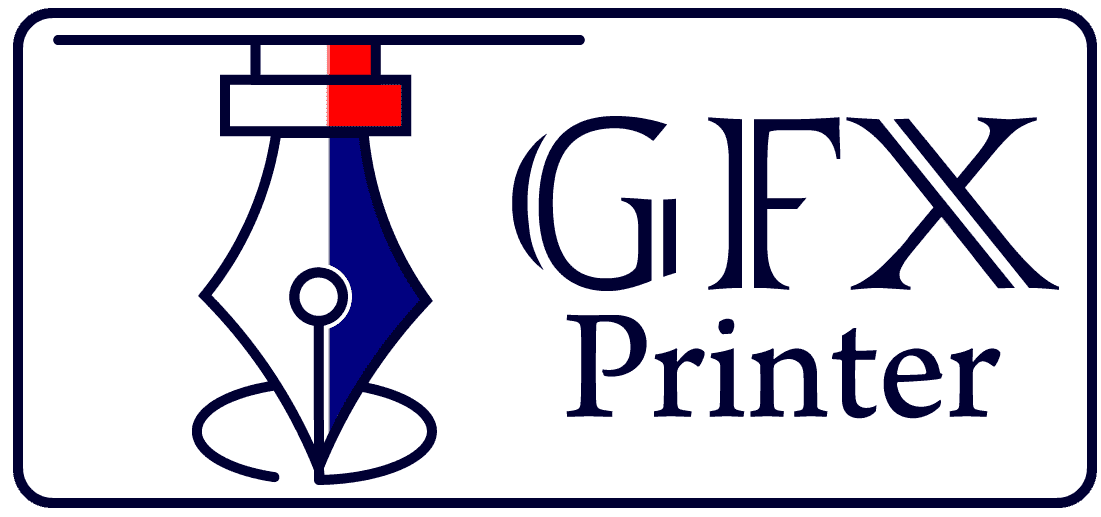
![Mistakes to Avoid in Sticker Production [New Data]](https://gfxprinter.com/wp-content/uploads/2024/02/Mistakes-to-Avoid-in-Sticker-Production-New-Data.webp)

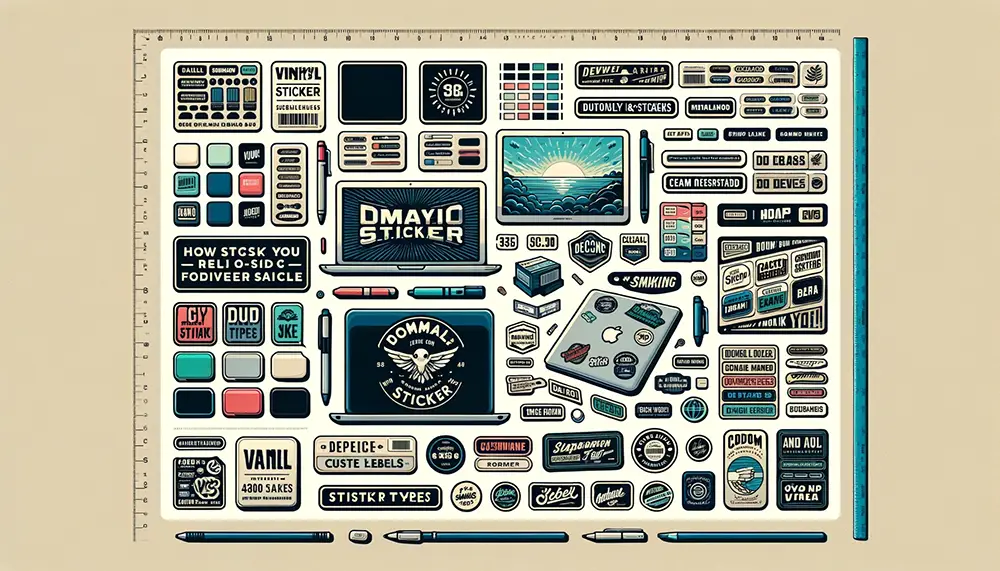

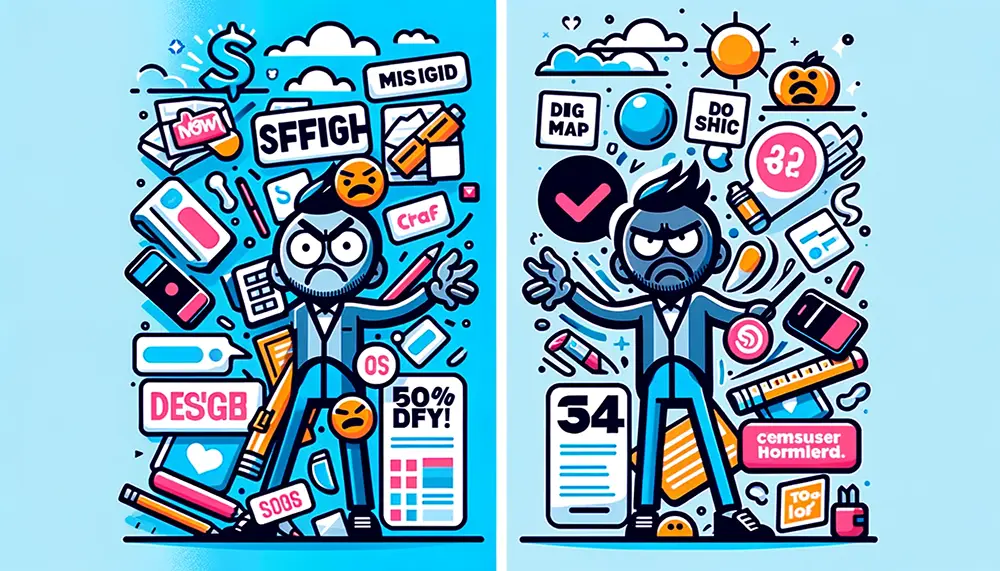
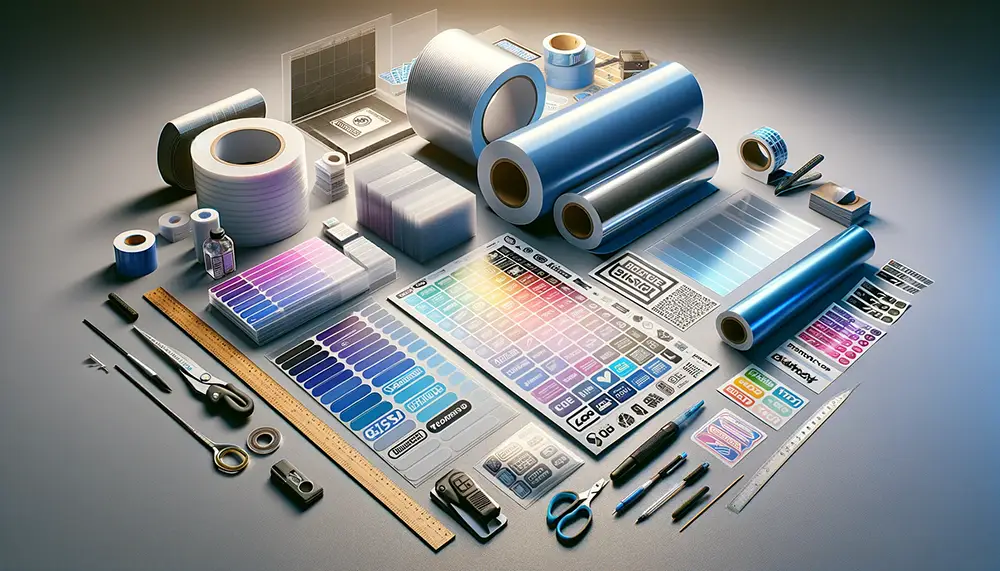


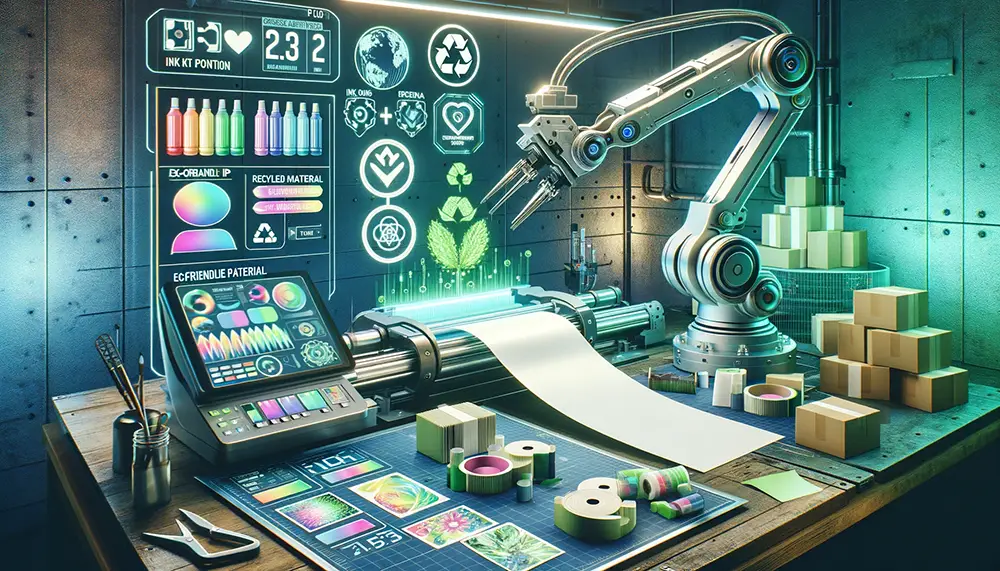
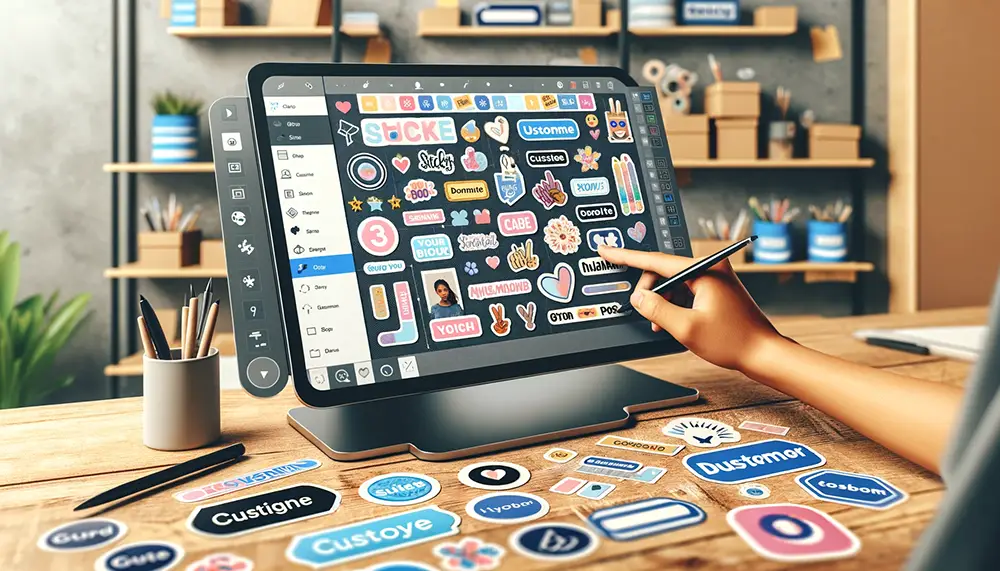





One Comment
Thank you for taking the time to read our article! We hope it provided valuable insights into the intricacies of sticker production and how to avoid common pitfalls. If you noticed any discrepancies or have any questions, please don’t hesitate to point them out. Your feedback is crucial for our improvement.
We’re always on the lookout for fresh ideas and perspectives. If you have any suggestions or topics you’d like us to explore in future articles, please share them with us. Your input is greatly appreciated and helps us create content that is both relevant and informative for our readers. Thank you once again for your support!